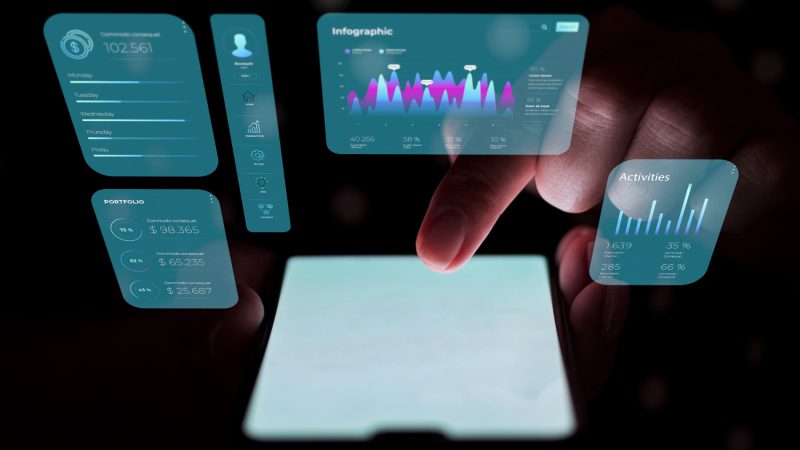Five Key Strategies to Grow Your B2B E-Commerce Business

Nowadays, competing in the digital world is tough. Not only do you have to go up against your existing competition, but you also have to brave your way through giants like Amazon Business and Alibaba.
As it stands, the eCommerce industry is growing faster than ever. A projected 10% growth per year, B2B eCommerce is a trillion-dollar industry involved in trade activities all over the world.
Because of its rapid growth, business owners oftentimes find it hard to keep up with the changes. Think about it, you just established a working strategy, and changes in the industry prompt you to alter it again.
It’s not a position you want to find yourself in.
Fortunately, there are plenty of concrete ecommerce solutions strategies you can apply for the long-term. Once you apply these to your store, all you have to do is adjust it to industry changes.
So, let us begin with the very first.
Enrich the Content on Your Product Pages
You want to ensure that a buyer is inclined to purchase your product. One of the best things you can do for that is to make the content of your website as detailed as possible.
On top of written content, you can add images, infographics, knowledgebase articles, and even videos to add value to your POS (Point of Sales) system.
Doing this is fairly easy. All you have to do is audit your existing web pages and see where there is a need to add content. But that’s just the first part.
When you’ve analyzed the points where you need to add content, you have to come up with a way to make those copies as insightful as possible. The end-goal is copy-written content that takes the customer through a journey and convinces them to purchase the product.
Quick-Tip: When writing the content, don’t try to oversell or undersell. Maintain a balance and be truthful about your offerings.
Capitalize on Social Media

B2B and social media, seems like a disconnect doesn’t it? Well, it’s not.
Studies have shown that social media is the third most effective tool for B2B Operations preceded only by newsletters and blog content.
Posts uploaded on Instagram, Facebook, and Twitter are a great way to drive traffic and engagement to your website. Your social media channels should be up-to-date with the latest information related to your business.
Industry news paid posts, product explainer videos, infographics, discounts, and reviews are a great way to keep your audience engaged. Using the live stream functionality on these social media platforms, you can even conduct a live Q&A for your business
Hubspot does a really good job of social media marketing on its Instagram page, sharing the latest news, infographics, among other practical marketing tips.
Improve Onsite Search Functionalities

If you’ve got plenty of products on your page, it’s counterintuitive not to have an advanced search and filter functionality.
Your users, regardless of whether they’re new or old, don’t have the time to browse through countless products to find what they’re looking for. Clear and functional search functionality can do wonders in helping users find their products.
According to a 2018 survey by BigCommerce, ease of navigation was considered one of the most important factors in improving the sales of a B2B business, with respondents agreeing at a whopping 71% on the matter.
Your strategy at this point would be to build a search bar with a niche-specific filter. By this, we mean having an advanced search with filters that allow users to sort by date, time, keywords, quotations, product type, category type.
The global eCommerce marketplace, Alibaba is one site that takes its search functionality seriously. Its search has a massive array of filters that essentially helps you find any product you want in the store.
Depending on the platform, you can add such filters by yourself. However, we would recommend you to try out a B2B eCommerce Development Agency that can help you add that functionality.
Price and Ordering Flexibility

The ultimate tried and tested method for improving sales is providing flexibility with ordering and pricing. Buyers can feel isolated when the screen in front of them includes products that are not in line with their preferences.
Before altering your ordering and pricing model, it’s best to perform an audit of your sales reports and budget. Only when you have an understanding of them can you alter your sales reports.
For ordering, you can allow monthly subscriptions on software products, or discounts on bulk purchases, and more. For payments, you need to provide multiple payment options like PayPal, Stripe, and more. For B2B specifically, you need to provide a method of Terms Payments (30-day, 60-day, etc.) and offline payments for traditional buyers.
Focus on Ratings and Reviews

For B2B buyers looking for software solutions, purchasing or subscribing to a solution isn’t a one-time thing. When a potential customer lands on your store, it’s the beginning of a long-term relationship.
You need to provide them with adequate information before they make a purchase. Reviews and ratings are one way to increase the chances of a sale.
Reviews and ratings, whether internal or external, are a sign of your store’s credibility and legitimacy. When you have actual reviews from actual people with credentials, you’re significantly improving your conversion rates.
Try to add as many reviews and ratings of your products and spread them throughout the website. In addition to this, you can also add significant personalization in the form of a testimonials page.
Pro-Tip: If you’re placing user-reviews on landing pages, make sure to include their credentials (their occupation, their social media profile, etc.) after asking their consent, of course. This provides prospective customers with an option for contacting those reviewers related to the product.
Conclusion:
Operating a B2B business is tough, we know! But while the change in the industry is essentially constant, there are times and tested strategies that you can use to improve your store’s bottom line significantly. Having these essentials in place can put you well on your way to increase customers and conversion rates for your store.
Also Read: Customer Data Platforms: Is Your Business Prepared?






